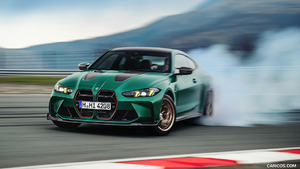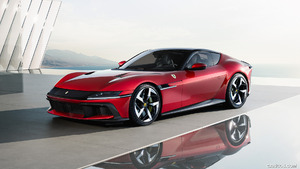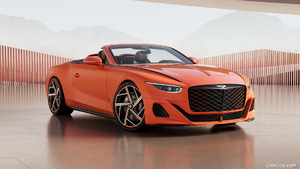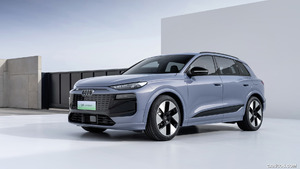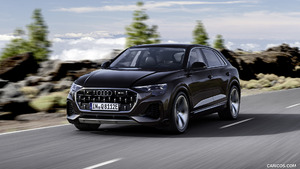2011 Volkswagen Jetta
German Engineering: New Jetta is one of the most fuel-efficient sedans in the world Design avant-garde: Jetta styling follows the new Volkswagen Design-DNA
Wolfsburg / Herndon, Virginia / June 2010. Today, Volkswagen is presen ting – at Times Square in New York - an entirely new Jetta design. The model series has a global presence with 9.6 million units sold, and it has been a bestseller especially in the USA. The follow-up model to the most successful German brand sedan in America takes a gigantic leap forward – conceptually and especially in its styling. The design projects a more dynamic image than ever before. Offering a preview of the new Jetta’s styling was the NCC coupe concept car shown at the North American International Auto Show in Detroit. Designers of the new Jetta sedan drew their inspiration from the coupe, and this bodes well for the potential sports appeal of the new Jetta. This also means that the new Jetta will no longer be sharing any body components with the Golf, rather it will be a vehicle type that is just as independent as a CC or a Tiguan.
The new car’s dimensions were re-proportioned compared with those of the concept car and the previous Jetta model: Wheelbase (+ 2.76 inches/+ 7 cm) and exterior length (+ 3.54 inches/+ 9 cm) grew significantly. The perceptible results: superior performance, more space, greater comfort.
Designers and engineers also re-designed the interior down to the finest details; the quality and detailed perfection inside the five-seater now truly exceed traditional class boundaries. For the first time, if the customer is looking for a more customized ambiance it is also easy to have interior accents changed out at a Volkswagen dealer.
German Engineering is the key word that captures the attention of many customers in the USA. And that is not the only place where German engineering stands for the highest quality and efficient technolo gy. The new Jetta is a prime example, and a look at its powertrain technologies illustrates this clearly. As a turbodiesel with highly advanced common rail direct injection, the Jetta sets the benchmark. The US version, equipped with a 103 kW/140 PS TDI Clean Diesel (conforming to the BIN 5 emissions standard) attains a top value for Highway fuel econo my with 42 mpg* (combined fuel economy: 34 mpg*) – making the Jetta one of the most fuel-efficient vehicles on the market. In Europe, Volkswagen will be introducing its smallest TDI – a 77 kW /105 PS engine – in early 2011. In the BlueMotion Technology version, this Jetta’s fuel consump tion is a sensational 4.1 l/100 km* – a top value for a sedan in the 4.6-meter class.
In addition, Volkswagen has tailored US equipment versions (S, SE, SEL and TDI) to consistently fulfill the wishes of American car drivers, and it has developed a sedan that is one of the best in its class in terms of quality and fuel economy. The already well-equipped base version will launch at prices starting at 15,995 US dollars (European prices for the Jetta Trendline, Comfortline and Highline to be announced for specific countries as pre-ordering begins). In parallel, Volkswagen has deve loped a second version of the safety chassis designed especially for America.
Exterior styling and dimensions
Never before has a Jetta been so large. The new model is 182.7 inches (4.64 meters) long, 57.1 inches (1.45 meters) tall and 70.1 inches (1.78 meters) wide. As noted, this makes the Volkswagen now being presen ted in New York 3.54 inches (9 cm) longer than the previous model. The interplay of exterior dimensions leads to a powerful balance of propor tions. In parallel, the new Volkswagen ‘design DNA’ sharpens the car’s styling. This has resulted in clear, precise lines and athletically muscu lar surfaces, which lend a timeless elegance and dynamic styling to the sedan.
Front end: Here, the prominence of horizontal lines defines the design. The high-gloss black radiator grille combines with the car’s trapezoidal headlights to form a styling unit. Under the unit formed by the grille and headlights there is the fully painted bumper, which is designed as a cleanly sculpted surface. One section lower, another cooling air intake and the tray-shaped front spoiler (in the style of ‘splitters’ used in car racing) gives the car a sporty finish. The upper front end section shows a powerful transition from the v-shaped engine hood to the fenders on the sides; the shoulder section realized here was derived 1:1 from the NCC concept car, and it produces dynamic and muscular styling.
Side profile: In the side profile of this sedan, styling characteristics that mark all new Volkswagens launched during the past year meld into yet another interpretation of the ‘design DNA’ conceptualized by the Italian Head of Design for the Volkswagen Group (Walter de Silva) and the German Head of Design for the Volkswagen Brand (Klaus Bischoff). The best example of this: the characteristic shoulder or ‘tornado’ line and the powerfully emphasized arches of the wheel wells. Formally, they intersect the main volumes of the large homogeneous surfaces, conveying a strong dynamic image. Thanks to wide track dimensions, the wheel arches also form a precise transition – as though cut with a knife - to accommodate up to an 18 inch wheel. Meanwhile, the styling of the outside mirrors with their integrated turn signal indicators emulate the larger CC. Compared to the previous model, the new Jetta has also grown in clarity and pre-eminence in its side profile.
Rear section: Harmonized surfaces and sporty shoulders also dominate the look in back of the new Volkswagen Jetta. Powerful in illumination and visually distinctive: the taillights. They are split into two sections, and on each side they extend from the fender into the tailgate.
Interior and dimensions
The interior with its high-end image definitely pushes the boundaries of the vehicle class above. The Jetta is significantly increasing its lead over the competition here. One key benefit of the car’s extended wheelbase is that it enabled a layout of the rear seating area of the five-seat Jetta that is substantially more comfortable. Compared to the previous model, legroom is now a long 38.1 inches (96.7 cm) - a gain of 2.6 inches (6.7 cm). Inside, the new Jetta also offers unparalleled perfection in details, and – as a common conceptual thread throughout the car – intuitive controls. The instruments are ideally arranged. The new steering wheel designs (optionally with multifunction keys) impress both visually and to the touch. The right hand rests ergonomically on the gear shift grip; further up on the center console are the newly designed and intuitive controls for the climate control and radio and radio-navigation sys tems; this console section is slightly inclined toward the driver for an ideal align ment of the cockpit that focuses on the driver’s needs. Also in optimal view are the round instruments; the multifunction display (trip computer) is located between them. Even in the base version, the rear bench seat- back is split 40/60 and folds, increasing the car’s versatility. The tailgate can also be opened from inside the car by a remote unlock switch. Up to six airbags (two front airbags, two side airbags in front, two window airbags/thorax airbags in the area of the front side windows) are also part of the equipment package.
Fuel-efficient engines
Four engines for America: In the USA and Canada, the new Jetta is offered with three petrol engines and one turbodiesel direct- injection engine (TDI Clean Diesel). Two of the four engines are new on board: the entry- level engine (85 kW/115 PS) and the common rail TDI (103 kW/140 PS). Technically perfected in the new model are the 125 kW/170 PS 2.5-liter gasoline engine and the sporty top engine, the turbocharged 2.0-liter TSI with 147 kW/200 PS, which will power the top model Jetta GLI in North America starting in 2011. The new 115 PS engine has a combined fuel economy of 28 mpg* (manual transmission); the version with automatic transmission attains a value of 26 mpg*. A technical highlight is the new 2.0-liter TDI Clean Diesel; thanks to conversion to the world’s leading direct injection diesel system - common rail injection - the turbo charged engine is as quiet as a gasoline engine and as power ful as a sports car engine (320 Newton-meters maximum torque). A particu late filter and a NOX storage catalytic converter ensure that this TDI meets emissions requirements in all states of the USA. A combi ned fuel economy of 34 mpg makes the new and very agile Jetta 2.0-liter TDI (0 – 60 mph in 8.7 seconds) one of the most fuel-efficient and lowest emitting vehicles on the North American continent.
All engines are offered with a manual transmission as standard equipment. Of course, an automatic transmission is also available with each engine version as an option. On the new 2.0-liter TDI and 2.0-liter TSI, Volkswagen is implementing the 6-speed DSG - one of the most ad vanced and efficient automatic transmission systems in the world.
Six engines for Europe: In Europe, the engine strategy will conform to prevailing market conditions. Smaller engine displacements and charging are key objectives here. This means somewhat less power in the base engines, significantly lower engine displacements, and all engines are charged. Four of the six engines are new to the Jetta program and will be added in 2011: The 1.2 TSI (77 kW/105 PS), 1.4 TSI (118 kW/160 PS) and two common rail turbodiesels 1.6 TDI (77 kW/105 PS) and 2.0 TDI (103 kW /140 PS). As usual, the 1.4 TSI (90 kW /122 PS) and the 2.0 TSI (147 kW/200 PS) offer high-tech in proven form. Except for the 1.2 TSI, all engines may be paired with a 6-speed DSG (77 kW TDI, 103 kW TDI, 147 kW TSI) or 7-speed DSG (90 kW TSI, 118 kW TSI).
Naturally, every Jetta engine offered in Europe fulfills requirements of the EU-5 emissions standard. The 1.2 TSI and 1.6 TDI are also equipped with the BlueMotion Technology package. This means that their technical features include a Start-Stop system and battery regenera tion. The new Jetta 1.2 TSI BlueMotion Technology consu mes just 5.3 l/100 km* (equiva lent to 123 g/km* CO2) – an absolute top value for a gasoline-powered sedan with a top speed of 190 km/h. The Jetta with 1.6 TDI BlueMotion Technology attains a sensationally low combi ned fuel consumption of 4.1 l/100* km (109 g/km* CO2); with this engine, the Jetta is the most fuel-efficient 4.6-meter sedan in the world.
* All mpg data are forecast EPA values for the USA. All l/100 km data are forecast NEDC values for Europe.







